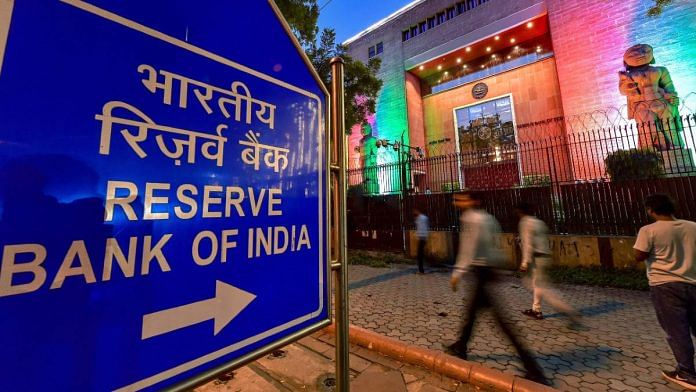New Delhi: In his second monetary policy announcement after taking over as the Reserve Bank of India (RBI) Governor, Sanjay Malhotra announced Wednesday that the Monetary Policy Committee has decided to cut the repo rate by 25 basis points to six percent in its second consecutive rate cut, changing the central bank’s stance from accommodative to neutral.
This comes amid looming uncertainties after last week’s announcement of 27 percent tariffs on Indian imports to the US by Donald Trump.
The central bank began the easing cycle by lowering the policy rate by 25 basis points in February, the first decrease since May 2020 and the first modification in two and a half years. The RBI has since launched a series of liquidity injection measures. It has injected nearly Rs 7 lakh crore into the banking sector via a variety of steps, such as asset purchases, FX swaps and variable rate repo (VRR) auctions.
Dharmakirti Joshi, chief economist at Crisil said, “The monetary policy met expectations with a 25 basis point rate cut. With downside risks to growth greater compared to the February policy and inflationary pressure weaker due to falling crude prices, a rate cut was a foregone conclusion.”
The MPC held its meeting from 7 April to 9 April. The standing deposit facility (SDF) rate under the liquidity adjustment facility (LAF) will stand adjusted to 5.75 percent, and the marginal standing facility (MSF) rate and the bank rate to 6.25 percent, added Governor Malhotra Wednesday.
The RBI also revised its growth estimates for FY25-26, lowering GDP estimates by 20 points to 6.5 from the earlier 6.7. It has cut down its FY26 consumer price index (CPI) inflation prediction to 4 percent from 4.2 percent before, with Q1 at 3.6 percent, Q2 at 3.9 percent, Q3 at 3.8 percent, and Q4 at 4.4 percent.
V.K. Vijayakumar, chief investment strategist at Geojit Investments Limited, said, “The 25 bps cut in policy rates and the shift in policy stance from neutral to accommodative are in tune with market expectations. Importantly, this decision is unanimous. The message from the accommodative stance is that either rates will remain the same or will decline further. RBI projecting India’s growth rate in FY26 at 6.5 percent is reflective of the confidence in the resilience of the economy in these troubled times.”
Commenting on the external factors affecting the Indian economy, Malhotra said: “The risks to inflation, on the other hand, are two-sided. On the upside, uncertainties may lead to possible currency pressures and imported inflation. On the downside, the slowdown in global growth could entail further softening in commodity and crude oil prices, putting downward pressure on inflation. Overall, while global trade and policy uncertainties shall impede growth, its impact on domestic inflation, while requiring us to be vigilant, is not expected to be of high concern.”
The RBI governor further said that the external services sector in India showed resilient growth in January-February 2025. The Current Account Deficit (CAD), he said, is expected to remain within limits.
According to the Monetary Policy Statement, net FPI inflows to India stood at 1.7 billion US dollars during 2024-25, supported by debt inflows as the equity segment recorded net outflows. External commercial borrowings and non-resident deposits, on the other hand, witnessed higher net inflows compared to last year. As on 4 April, 2025, India’s foreign exchange reserves stood at $676.3 billion, providing an import cover of about 11 months.
(Edited by Mannat Chugh)
Also Read: Why Trump’s tariffs are unlikely to severely impact the Indian economy






